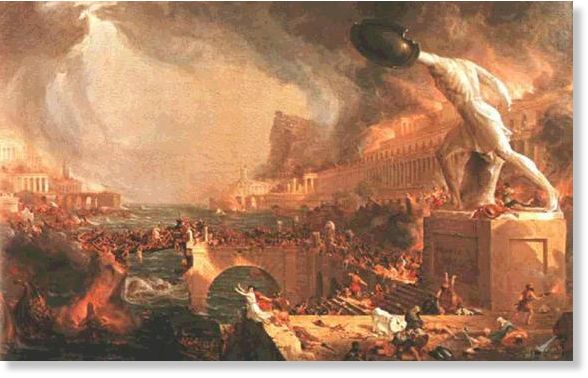In early Iraq history dates a Assyrian clay tablet going back as far as 2800 BC bearing the words "our earth is degenerate in these latter days. This indicated that bribery and corruption are common was rife in their society and that is the first example of the perception of moral decay in society being interpreted as a sign of a imminent end.
Apocalyptic thinking gripped many ancient cultures, including the Romans, Many Romans feared that the city would be destroyed in the 120th year of its founding. There was a myth that 12 eagles had revealed to Romans a mystical number representing the lifetime of Rome, and that each eagle represented 10 years.
There were many stories of apocalyptic paranoia around the year 1000, that panic terror gripped Europe in the years and months before this date. After when Jesus failed to return in 100 some mystics pushed the date back to the thousandth year. The writings of Burgundian monk Radulfus Glaber described it as millennia Paranoia.
Christopher Columbus believed that on his return journey to America that he would see the garden of eve, which was sign to for the on coming Apocalypse.
John Nelson Darby a Anglo irish evangelist, considered the father of Dispensationalism (when God comes down to earth to relate to humans) and Futurism. He had developed the Pre-tribulation Rapture theology around 1830, and later was popularized in the early 20th century by Cyrus Ingerson Scofield. Who wrote a reference Bible, which sold millions of copies.
The first world war brought about more anxiety, confirming the apocalyptic ending for sci-fi writer such as H.G wells. A few years after the end of second world war in 1945 The first Detonation of the Atomic Bomb brought a new fear of an Apocalypse not from a religious back ground but in a secular main stream view.
The oncoming apocalypse has a long history of doomsayers and that for what ever reason we need to prepare ourselves. It seems now like a marketing ploy to use this fear factor to sell chevy trucks to avoid the disasters. But judging by the history I can see its embedded within our psyche, with this in mind its is best we embrace the future and not fear the unknown.




No comments:
Post a Comment